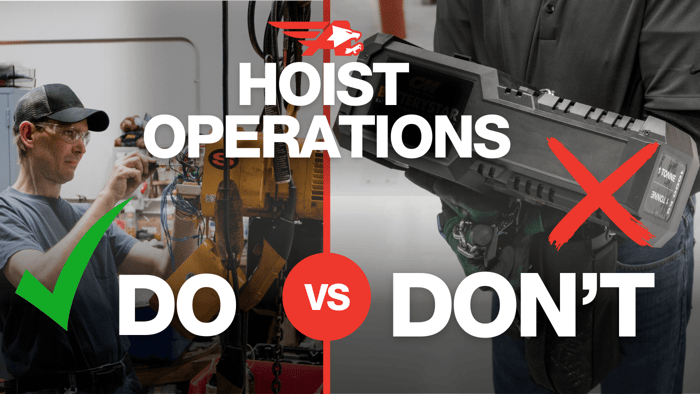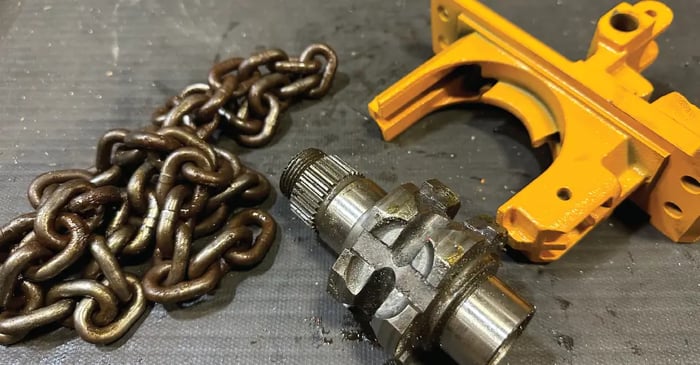
Understanding the Dangers and Precautions of Two-Blocked Hoists
Two-blocked hoists are a common term in the field of crane operations, referring to a hazardous condition that can lead to catastrophic accidents. This dangerous situation occurs when the load block and the upper block or boom tip come into contact with each other. The resulting impact can cause severe damage to the equipment, endanger the operators and workers in the vicinity, and even lead to fatalities. In this comprehensive guide, we will delve into the causes of two-blocking, its potential consequences, and the essential precautions that must be taken to prevent such incidents. By understanding the risks associated with two-blocked hoists and implementing proper safety measures, we can ensure a safer work environment in crane operations.
Understanding Two-Blocked Hoists
Two-blocking occurs when the load block, which is attached to the crane's hoist line, reaches the maximum extent of its upward travel, and meets with the upper block or boom tip. This collision creates a sudden jolt of force that can damage the hoisting system, compromise the structural integrity of the crane, and endanger personnel working in the vicinity.
Causes of Two-Blocking
Several factors can contribute to a two-blocked hoist situation, including:
- Inadequate operator training: Lack of proper training and understanding of crane operations, including load capacities and limitations, can lead to misjudgment and inadvertent two-blocking.
- Improper load control: Poor load control techniques, such as excessive hoisting speed or abrupt changes in direction, can cause the load to swing or spin, increasing the risk of two-blocking.
- Insufficient clearance: Inadequate clearance between the load and the upper block or boom tip can result in two-blocking, particularly when hoisting heavy loads or operating in confined spaces.
- Equipment failure: Malfunctioning or poorly maintained limit switches, load cells, or other safety devices can fail to prevent two-blocking incidents.
- Communication breakdown: Poor communication between the crane operator and signal person can cause miscommunication or misunderstandings, which raises the chances of two-blocking.
Consequences of Two-Blocked Hoists
The consequences of a two-blocked hoist can be severe and pose significant risks, including:
- Equipment damage: The impact between the load block and the upper block or boom tip can cause extensive damage to the crane's components, such as bent hooks, broken lines, damaged sheaves, or even structural failure.
- Worker injuries and fatalities: Two-blocking incidents can result in serious injuries or fatalities to personnel in the vicinity. Workers may be struck by falling objects, struck by the load block or upper block, or caught in the sudden release of tensioned cables.
- Project delays and costs: The aftermath of a two-blocking incident requires downtime for repairs, investigations, and potential legal repercussions. These delays can impact project timelines and lead to increased costs.
Preventive Measures and Best Practices
To mitigate the risks associated with two-blocked hoists, it is crucial to implement the following preventive measures and best practices:
- Operator training and certification: Ensure that crane operators are properly trained, certified, and familiar with the specific equipment they are operating. Operators should be educated on load limits, safe working practices, and the dangers of two-blocking.
- Load monitoring systems: Equip cranes with reliable load monitoring systems, such as anti-two-block devices, that provide audible and visual warnings when the load is approaching the upper limit.
- Proper load control techniques: Promote safe load control practices, including smooth and controlled hoisting movements, avoiding sudden changes in direction, and utilizing tag lines to control swinging or spinning loads.
- Regular equipment inspections and maintenance: Implement a rigorous inspection and maintenance program to ensure that all crane components, including limit switches, load cells, hooks, and cables, are in proper working condition. Regularly check for signs of wear, damage, or malfunction that could contribute to a two-blocking incident.
- Communication and coordination: Establish clear communication protocols between crane operators and signal persons. Effective communication ensures that both parties understand load movements, clearance requirements, and potential hazards, reducing the risk of miscommunication that could lead to a two-blocking incident.
- Rigging and clearance assessment: Properly rig the load to maintain adequate clearance between the load block and upper block or boom tip. Conduct a thorough assessment of the working area, considering factors such as the load size, boom angle, and swing radius, to ensure sufficient clearance during hoisting operations.
- Job site awareness and exclusion zones: Establish clear exclusion zones around the crane during operations to prevent unauthorized personnel from entering hazardous areas. Promote job site awareness and enforce strict adherence to safety protocols to minimize the risk of two-blocking incidents.
- Continuous training and safety culture: Foster a culture of safety within the organization by providing ongoing training and education on crane operations, hazard identification, and safe work practices. Encourage workers to report any potential issues or near-miss incidents related to two-blocking to improve overall safety awareness.
Two-blocked hoists pose significant risks in crane operations, threatening the safety of workers and causing damage to equipment. Understanding the causes, consequences, and preventive measures of two-blocking allows organizations to prioritize safety and minimize such accidents in the workplace.
Proper training, inspections, communication, and safe work practices mitigate two-blocking dangers, ensuring safer crane operations and reducing accidents. Remember, prevention is key when it comes to two-blocked hoists. A proactive approach to safety is crucial for the well-being of all personnel involved.




